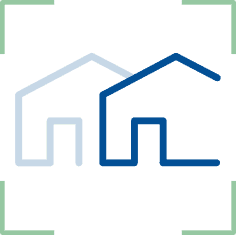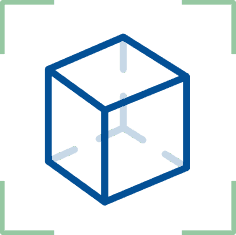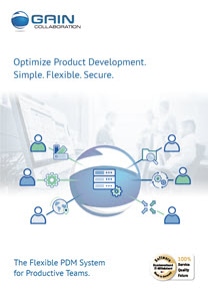

Company

Employees

Product

Time
Product data management:
How a PDM system works
into a dream team.
Product data management creates
Overview, transparency and productivity
The efficiency backbone for companies
Product data management (PDM for short) enables sustainable increases in productivity.
PDM regulates the handling of product data in the product development process across locations and companies. Defines processes and makes products reproducible.
PDM is realized by a company-wide, central PDM system to which other software systems (CAD, ERP, etc.) are connected via interfaces.
A PDM system brings benefits for everyone

For companies
Full value creation
Companies increase their productivity by working effectively and efficiently. Reduce product development costs.
- Fast product development process
- Improved quality of product development
- Savings in development time and costs
- Optimization of operational resources
- Uniformly defined processes

For employees
Productivity and job satisfaction
More time for essential, productive design work. Less time wasters – more enjoyment of work.
- More transparency in day-to-day business
- Controlled access to current data at any time
- Fewer development errors
- Simplified information procurement
- Optimized communication flow
- Simplify collaboration among global teams

For product development
The foundation of product development
An implemented product development process (PDP) regulates the development, planning and production of products.
- Efficient product development
- Management of product data and process-related information in a secure, central archive
- Product data and product statuses can be called up at any time
- Product classification and filters enable fast availability via product data

For time savings
time is money
Streamline all product creation and product data retrieval times.
- Shortening of development times (time-to-market)
- Fast access times
- Quick information search
- Shortening of production and assembly planning
- Reduction of the lead time of change orders
Questions & answers about PDM
What is product data management?
Product data management (also PDM or Product Data Management) includes
- The collection, management and provision of all product-defining data relevant to the development of a product,
- the organization of workflow, revision and configuration management (work statuses),
The meaning of PDM is an integrated product model.
What is product data?
Product data are all data or documents that arise during product development.
The documents either result from automated processes or are generated manually.
Examples of product data:
- CAD data: For example 2D drawings, 3D models
- Office data: For example text documents or tables
- Calculation data: For example, those of the finite element method (FEM)
- Project data: For example, details of product or customer
What is the goal of product data management?
The use of software for the management of product data …
- maximizes the quality of product development
- minimizes time and costs in product development
- reduces errors such as the production of incorrect version statuses
- enables traceability, for example by logging processes in a history
- automates processes
- centralizes product data and combines them
What is a PDM system?
A product data management system or PDM software ensures the practical implementation of product data management.
Before this system is put into operation, all rules and authorizations to be agreed upon within the company must be clarified and approved. For example, the design of workflows, the way in which products are classified or which employees should be given which access rights.
The PDM system – as a company-wide information and coordination system – then centrally records these regulations as well as the actual product data and ultimately makes them available to individual employees for retrieval.
The advantages of PDM?
The advantages of an integrated PDM system:
- Data security thanks to data safe or only released accesses
- Security through encrypted data transfers
- Better collaboration thanks to regulated releases or workflows
- Fast retrieval of searched data
- Controlled processes in the design department thanks to automated change requests or standardized parts lists
- Fewer errors due to duplicates or even conflicting versions
- Central management of production data
- More customer satisfaction thanks to accelerated processes
Who benefits from product data management?
In principle, all employees who want to view or edit product data benefit from PDM.
Benefit Examples:
- A designer builds a new drawing on a machine part that has already been designed in the past.
- A sales representative can retrieve specific product data to create a quotation.
- A buyer looks up the supplier of a particular spare part.
- Quality assurance staff can quickly look up the product information of a product that is the subject of a complaint.
- The work preparation department can view bills of material as specifications.
- An employee of an internationally managed company calls up the latest revision of a German plant part in Spain.
Software products associated with the PDM system
Product data is created through the use of various applications that are connected to the PDM system via interfaces.
Examples of applications in the PDM system:
- With the help of CAD programs such as AutoCAD or Solidworks, 2- or 3-dimensional construction drawings or models are created.
- An ERP software maps suppliers or also price information around a product.
- NC data for individual production steps are provided via CAM applications.
In this respect, one could say that PDM software is the core of a comprehensive PDM system network.
How did product data management come about?
In principle, PDM has evolved from 3 different sources:
- Document Management Systems (DMS)
- Computer Aided Design (CAD)
- Resource planning systems (Enterprise Resource Planning / ERP)
The first PDM solutions came onto the market in the mid-1980s under the outdated name of “drawing management” or “EDM” (Engineering Data Management).
At that time also from the problem to want to administer the constantly growing flood of CAD documents in the connection with scanned drawing plans.
Differentiation from PLM (Product Lifecycle Management)
The life cycle of a product (product lifecycle) is a much more far-reaching area than that of product creation.
Factors influencing the life cycle of a product include, for example, the pricing or service policy of the supplier. Competitors, the investment climate or the choice of distribution channels may also play decisive roles.
PLM solutions originally had the same core functions as PDM systems. Learn more about the distinction PDM – PLM…
Differentiation from PIM (Product Information Management)
A Product Information Management (PIM) manages product information media-neutrally. In a further step, the PIM makes these available for various media such as websites, brochures or print catalogues.
Examples PIM data:
- Media data: Photos, videos, PDFs, etc.
- Marketing data: Descriptions, product stories, labels, etc.
The benefits of an implemented product information system:
- Employees save a lot of time and costs internally thanks to centralization of all product information
- Interested parties, customers or suppliers benefit from uniform standards in product presentation, from constant up-to-dateness, etc.
Product data management (PDM), on the other hand, focuses on product data and its creation (processes).
Examples PDM data:
- The nature of a component: Size, weight, alloy, etc.
- Assemblies as a coherent unit of a machine
- The release system for design development
The beneficiaries of this data are primarily
- Employees of the company, such as design engineers, the production department or even the sales department.
Your 1st step to GAIN Collaboration. Order a free demo:
Or do you have any questions
to GAIN Collaboration?
Please contact us: +49 521 967 613 – 0





